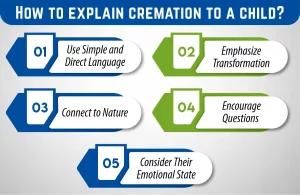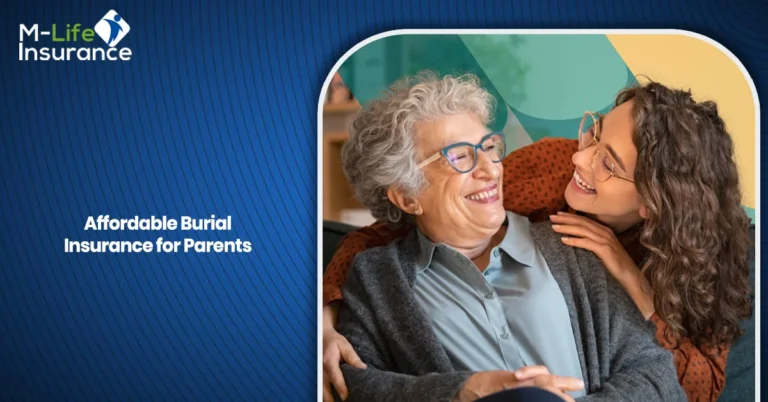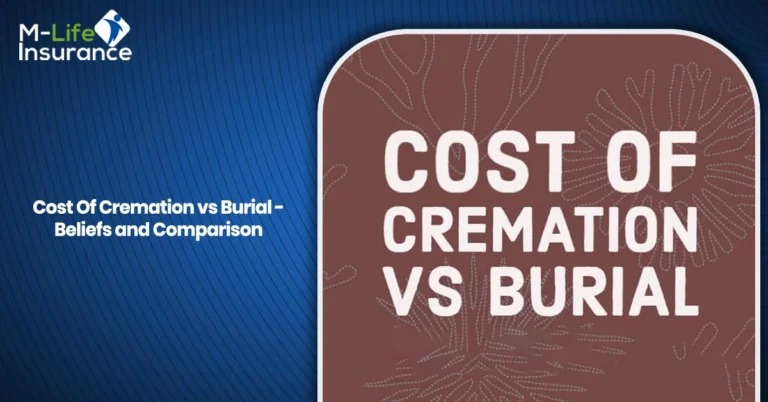Explaining tough subjects like cremation to children is like delicately planting seeds of understanding in their curious minds. It’s a conversation filled with tenderness, honesty, and a touch of gentle guidance. When a loved one passes away, children, like little explorers, seek answers to the mysteries of life and death. As adults, our role becomes that of compassionate navigators, gently guiding and explaining cremation to a child. In this comprehensive guide, we will try to unravel the concept of cremation and explore how to discuss this sensitive topic with our young ones. From shedding light on the cremation process to offering tips on handling their inquiries about life after death, we aim to equip parents and guardians with the tools to approach these conversations with empathy and clarity.Let’s discover together how to tenderly broach the topic of cremation and support children as they navigate the complex emotions surrounding loss.
What is the concept of cremation?
Cremation is a post-death ritual that involves the reduction of a body to ashes through the application of intense heat. It is an alternative to burial and is practiced in various cultures worldwide. The process typically occurs in a special facility known as a crematorium, where the body is respectfully cremated within a cremation chamber.Afterward, the remains, called cremated ashes or cremains, are collected and given to the family for final disposition, which may include scattering, keeping in an urn, or other ceremonial practices.How to explain cremation to a child?
Explaining cremation to a child involves approaching the topic with sensitivity and clarity, considering their age, maturity, and ability to comprehend difficult concepts. Here are some steps to effectively explain cremation to a child:1- Use Simple and Direct Language
Explain that cremation is a respectful way to take care of a person’s body after they have passed away. Use straightforward terms without euphemisms to avoid confusion.2- Emphasize Transformation
Describe how the body is placed in a special chamber where it’s heated very hot until it turns into small pieces called ashes. Explain that these ashes can be kept in an urn or scattered in a meaningful place.3- Connect to Nature
Use analogies from nature, like how a caterpillar transforms into a butterfly or how plants decompose to become soil, to help them understand the natural cycle of life and transformation.4- Encourage Questions
Let the child know it’s okay to ask questions and express their feelings. Answer their inquiries truthfully and provide reassurance.5- Consider Their Emotional State
Be mindful of their emotions and offer comfort, acknowledging any sadness or confusion they might be experiencing.Remember, the goal is to provide simple, honest, and age-appropriate information while explaining cremation to a child. It will help you to create a safe space for your child to understand and process the concept of cremation easily.How to Talk About Death to a Child?
Discussing death with a child is a sensitive and challenging conversation that requires empathy and age-appropriate explanations. Here are some steps to help navigate this difficult topic:Be Honest and Direct
Consider Developmental Stage
Discuss Emotions
Share Beliefs or Spiritual Views
Use Books or Stories
Explaining the Cremation Process
Explaining the cremation process to a child requires a delicate balance of simplicity and sensitivity. Here’s a guide on how to approach this conversation:Keep it Simple
Explain that cremation is a respectful way to take care of a person’s body after they pass away. Describe that the body is placed in a special room where it’s heated very hot until it turns into small pieces called ashes.Emphasize Respect and Dignity
Highlight that cremation is a solemn and respectful process where the body is treated with care and honor.Assure Safety
Reassure the child that the person who has passed away doesn’t feel anything during the cremation process and that it is handled by trained professionals in a safe environment.Explain What Happens Afterwards
Discuss what happens to the ashes, mentioning that they can be kept in a special container called an urn or scattered in a place that was meaningful to the person.Use Analogies or Examples
Depending on the child’s age, use simple analogies like how a candle melts or how wood turns to ash in a fire to help them understand the transformation process.Note that your goal is to offer clear and age-appropriate information while acknowledging the child’s emotions and providing reassurance during this conversation about the cremation process.Tips for Explaining Cremation to a Child
Here are some additional unique tips for explaining cremation to a child:- Use Visual Aids: Utilize visual aids like drawings, diagrams, or even videos designed for children to illustrate the cremation process. Visual representations can often simplify complex ideas and make them more accessible.
- Create a Memory Book: Consider making a memory book or collage together with the child, filled with pictures and stories about the person who has passed away. Use this as an opportunity to explain that while the body is no longer here, the memories and love remain.
- Visit a Crematorium or Cemetery: If appropriate and with the family’s consent, visiting a crematorium or cemetery beforehand can provide a visual context for the child. This visit can be guided by a professional who sensitively explains the process, helping demystify it for the child.
- Utilize Role-Playing: Engage in gentle role-playing scenarios where the child can play different roles involved in the cremation process, such as a respectful caretaker or a comforting family member. This hands-on approach can foster understanding and empathy.
Should we Involve Children in Cremation Decisions?
The decision to involve children in cremation-related decisions depends on various factors, including the child’s age, maturity level, and their relationship with the deceased. Involvement can provide closure but must be approached thoughtfully, ensuring it won’t overwhelm or traumatize the child.Is it appropriate for a child to be present at a cremation service or funeral?
Whether a child should attend a cremation service or funeral is a personal decision. Assess the child’s readiness, explain what to expect, and consider having a trusted adult present to support and guide them through the experience if they choose to attend.The Bottom Line
In conclusion, explaining cremation to a child demands sensitivity, honesty, and patience. It’s essential to provide comfort, reassurance, and age-appropriate information while allowing space for their emotions and questions. By creating an open and supportive environment, we can help children navigate the complex concepts of death and cremation while honoring their feelings and understanding.Frequently Asked Questions (FAQs)
1- What happens during cremation?
During cremation, the body is placed in a special chamber where it is exposed to high temperatures, usually between 1,400 to 1,800 degrees Fahrenheit. This intense heat reduces the body to bone fragments, and then those fragments are further processed to become fine ashes, which are given to the family.2- Can the person feel anything during cremation?
No, during cremation, the person who has passed away doesn’t feel anything. They are not aware or conscious during this process.3- What do you do with the ashes after cremation?
The ashes, also known as cremated remains or cremains, can be kept in an urn, scattered in a special place, buried, or even used in memorial jewelry or other keepsakes. Families choose what feels most respectful and meaningful to them.4- Is cremation the only way to handle someone’s remains after they die?
No, cremation is one option among various ways to handle a person’s remains after death. Burial, green burials, and other methods are also available, and different cultures and individuals may have unique preferences.5- Will I be able to see the person before they are cremated?
Some families choose to have a viewing or visitation before cremation. It’s okay to ask questions about this process and decide what feels comfortable for you.6- Is it okay to have feelings of sadness or confusion about cremation?
Yes, it is absolutely okay to feel sad or confused about cremation or the loss of a loved one. It’s a normal part of grieving, and everyone copes and understands things in their own way and time.
Joyce Espinoza, Expert Life Insurance Agent
Joyce Espinoza is a trusted life insurance agent at mLifeInsurance.com. She’s been in the insurance industry for over ten years, helping people, especially those with special health conditions to find the right coverage. At MLife Insurance, Joyce writes easy-to-understand articles that help readers make smart choices about life insurance. Previously, she worked directly with clients at Mlife Insurance, advising nearly 3,000 of them on life insurance options.





